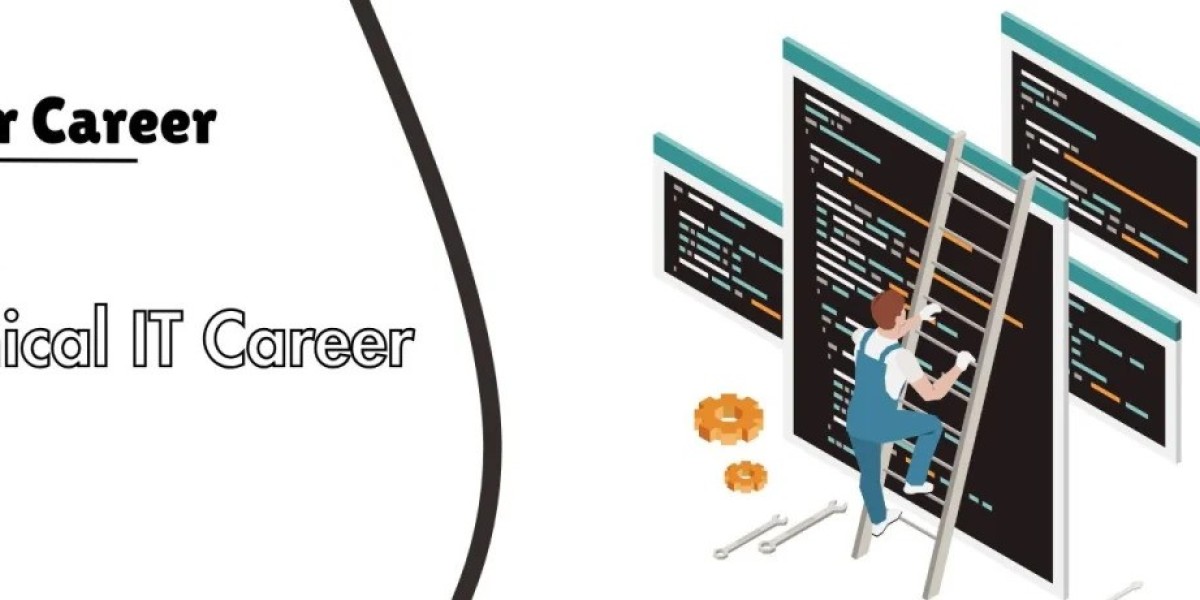Switching from a non-technical job to a technical IT career might feel challenging, but it's definitely possible with the right plan and attitude. IT jobs come with exciting opportunities, better pay, and strong job security, which makes the shift worth your time and effort. Here’s a step-by-step guide to help you successfully make this transition.
Step 1: Understand Your Motivation
Before you start, think about why you want to switch to a technical career. Is it for a better salary, more enjoyable work, or job security? Knowing your reason will help you set clear goals and stay focused as you move forward.
Step 2: Research and Choose a Technical Domain
The IT field is huge and includes different areas, such as:
SAP (Systems, Applications, and Products): Using software to manage different business processes like finance, inventory, and sales.
Software Development: Writing and testing computer programs or apps.
Data Analytics: Looking at data to find useful patterns and insights.
Cybersecurity: Keeping computers and data safe from hackers or threats.
Cloud Computing: Managing online services and storage.
IT Support: Helping people fix their computer problems.
Pick an area that fits your interests, skills, and career goals. For example, if you enjoy working with numbers or solving problems, SAP, data analytics, or cybersecurity could be a great choice.
Step 3: Upskill with Relevant Training
Learning the right skills is important when switching to an IT career.
Join Training Institutes: You can join a training institute that offers courses in IT skills. These institutes provide hands-on learning, expert help, and clear guidance, helping you build the skills you need.
Take Online Courses: Websites like Coursera, Udemy, and LinkedIn Learning offer affordable courses on different technical topics.
Get Certifications: Certifications like CompTIA, AWS, Google Cloud, or SAP certifications can boost your resume and show employers you have the right skills.
Step 4: Use Your Existing Skills
Problem-Solving: This is helpful when fixing issues or troubleshooting problems.
Communication Skills: These are important for working with teams and explaining technical ideas to people who are not familiar with technology.
Project Management: These skills help in managing projects, meeting deadlines, and staying organized.
Step 5: Build a Portfolio
Code Samples: If you’ve worked on personal projects, add your code to show your skills.
Reports or Dashboards: If you’re moving into analytics, share any reports or dashboards you’ve created.
Certifications or Completed Courses: Add any certifications or courses you’ve finished to show your knowledge.
Step 6: Network and Seek Mentorship
Join Online Communities: Get involved in forums like Stack Overflow, Reddit, or LinkedIn groups related to your field.
Attend Events: Attend tech meetups, webinars, or conferences to meet people working in the area you're interested in.
Find a Mentor: Look for someone who has gone through a similar career change or is experienced in the field you want to join, and ask for advice.
Step 7: Gain Practical Experience
Getting hands-on experience is key to building confidence and showing your skills.
Internships: Look for internships or entry-level jobs that help you learn on the job.
Freelancing: You can take on small projects through platforms like Upwork or Fiverr.
Volunteer Work: Many non-profits need help with IT, and volunteering is a great way to practice and learn.
Step 8: Tailor Your Resume and Apply Smartly
Show Your Skills: Highlight any technical skills and certifications you've earned.
Highlight Transferable Skills: Mention the skills you already have from your previous job that are useful in the new role.
Share Your Portfolio: Include a link to your portfolio or any projects you've worked on to show your work.
Step 9: Prepare for Interviews
Review Basics: Make sure you know the fundamental concepts of your chosen field.
Practice Common Questions: Check out interview questions on websites like Glassdoor to prepare.
Step 10: Keep Learning
The tech industry is always changing, so it's important to keep learning.
Stay Updated: Follow blogs, podcasts, and YouTube channels to learn about new trends.
Learn New Tools: As new technologies come up, take the time to learn them.
Attend Webinars or Workshops: Join events to stay current and improve your skills.
Frequently Asked Questions (FAQ)
What is the first step I should take to start a career in IT?
The first step is to figure out what part of IT interests you the most. It could be coding, IT support, or data analysis. Once you know, you can start learning through online courses or join a bootcamp to build your skills.
Do I need a degree to get an IT job?
No, you don’t always need a degree. Many companies look for practical skills. You can learn through online certifications, self-study, and hands-on projects.
Is it possible to work in IT if I don't have any technical knowledge right now?
Yes, it’s possible! Many people start without technical knowledge. You can apply for entry-level roles like IT support or junior developer and learn on the job.
Should I focus on one IT skill or learn about different areas?
It’s best to start with one skill or area to build a strong foundation. Once you get comfortable, you can explore other parts of IT, like security or cloud computing.Can I learn and work in IT while still studying or having a part-time job?
Yes! Many students learn IT while studying or working part-time. You can take online classes or do projects in your free time to build your skills without quitting your studies or work.
Switching from a non-technical job to a technical IT career is a big change that requires focus, learning, and effort. By following the steps mentioned above, you can make this transition successfully and open up new opportunities in the tech world. Keep in mind, it's never too late to start something new—everyone was a beginner at some point!










